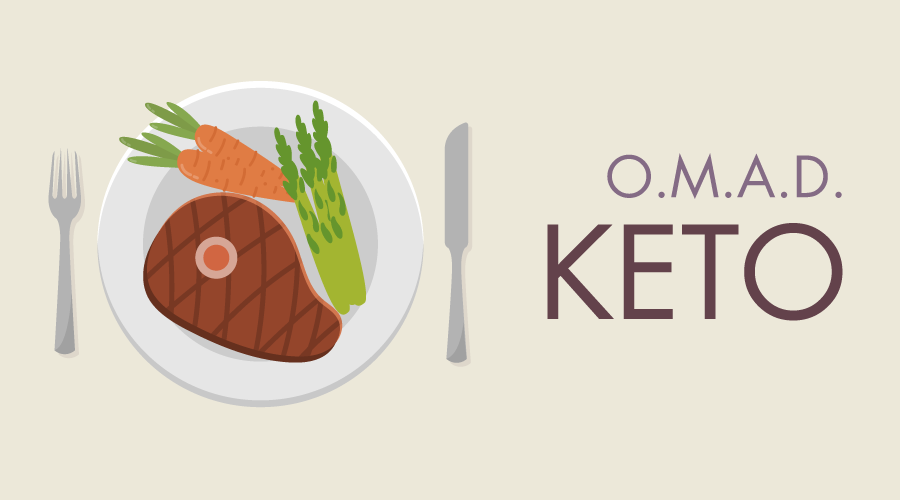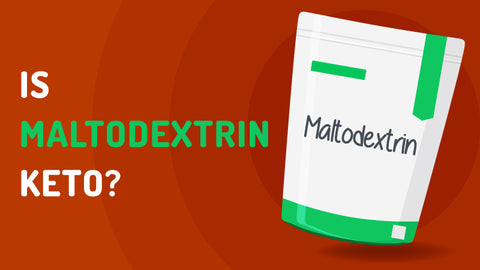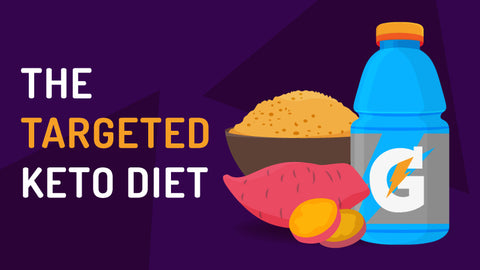OMAD (One Meal A Day) Keto Guide

on April 19, 2019
When it comes to the things we eat, some things simply go better together. Peanut butter and jelly, bacon and eggs, the list goes on and on. Did you know that this principle also extends to the keto diet?
When paired with intermittent fasting, the keto diet delivers better results and can help those following the keto lifestyle reach their dietary goals. This is where OMAD Keto comes into play.
OMAD stands for one meal a day. This diet combines all of the calories you eat per day into one big keto meal, with twenty-three hours of fasting per day in between.
How OMAD Keto Works
Not eating for twenty-three hours a day sounds a bit scary, not to mention incredibly challenging. Here’s how the eating plan breaks down.
About Fasting
Until recently, very few humans had the resources to eat multiple times a day. Calories were consumed when food was plentiful, and when it wasn’t, our bodies developed mechanisms to ensure functionality even in times of famine.
Fast forward to the present day, and the concept of three square meals per day is heavily ingrained in our social eating habits. What changed?
Humans figured out how to cultivate food, store and preserve it, and eventually process it. At the same time, humans were becoming increasingly more cooperative and social creatures. Three square meals a day, one at the beginning, middle, and end of the day, provided a predictable pattern. Eating habits transgressed from biological need to social behavior.
Fasting, or deliberately abstaining from food, is a well-studied and some of the benefits of fasting include weight loss, increasing focus and lowering blood sugar - fasting has been used for hundreds of years and continues to stay relevant.
According to studies, fasting is effective. It helps obese and overweight people lose weight, though fasting can be particularly difficult to maintain.
About Keto
Keto, or the ketogenic lifestyle, is a restrictive diet plan similar to other low-carb methods like the Atkins Diet. Those on keto restrict total carb intake to just 50g or less per day, substituting those carbs with healthy fats and proteins instead.
The goal is to enter the metabolic state called ketosis, in which the body switches energy sources from simple sugars in the blood to burning body fat already stored in the body.
Though the keto lifestyle was originally intended to treat pediatric epilepsy in patients who weren’t responding to other treatments, it has since exploded into the dietary scene.
Intermittent Fasting + Keto
By combining the methods of intermittent fasting and the ketogenic diet, the OMAD Keto approach was born.
The OMAD Keto lifestyle is built around a 23:1 ratio, which means you only get one hour to eat a full day’s worth of calories.
During those twenty-three hours of fasting, the body is tricked into thinking that food is scarce and starts to lower levels of insulin. This is a precursor to the body switching to autophagy, where you start breaking down your accruals of stored fat.
The goal of OMAD keto is not to feel like you’re starving all day. The idea is to train your body to feel hungry only at one time during the day. The rest of the day, you may feel hungry, but only at a level similar to what you’re used to before mealtimes.
Phases of the OMAD Keto Plan
When it comes to the OMAD Keto lifestyle, fasting and eating cycles become increasingly ingrained in your day-to-day habits.
Fasting Phase
The OMAD Keto plan calls for about twenty-three hours of abstaining from food. Calorie-free drinks like black coffee and tea are allowed, plus as much water as you need.
Because the ketogenic diet is structured around the starvation protocol in your body, pairing this approach with fasting delivers faster and longer time periods of ketosis. The bottom line? Faster and more efficient weight loss.
Feeding Phase
On the OMAD Keto regimen, you get to choose which hour of the day is your meal time, though it is important to pick a schedule and stick to it. This helps your body internalize the change in eating time and can help you feel less hungry throughout the rest of the day.
During your one meal a day, the rules of keto still apply. One should target a meal that is high in fat, moderate in protein, and low in carbohydrates.
Generally, followers of OMAD Keto consume between 1,800 and 2,500 calories for their one big meal, though some leave the calorie cap open-ended. Fans of this method recommend consuming these calories slowly. They suggest using the whole hour to consume your one meal so that your stomach isn’t overwhelmed with large amounts of food all at once.
Adding In Exercise
Exercise is an important facet of this lifestyle and can be added to the OMAD keto plan to help you burn even more fat. However, it’s important to consider the type of exercise you do and what time of day works for your body.
Many OMAD keto-ers work out before eating and after 16-18 hours of fasting, in order to achieve peak fat burning. However, it’s incredibly important to listen to your body. Stop your workout immediately if you feel lightheaded, faint, or have trouble breathing.
How Eating One Meal a Day Bolsters Your Keto
One of the well-documented health benefits of the Keto diet is its ability to curb hunger pangs. The fat-dense foods fill up the stomach more than carbs would during meals. This can also help you reduce snacking, which is not allowed outside of your one meal a day.
Because the high-fat and moderate protein foods of the keto diet help you feel full for longer, keto paired with OMAD is easier than OMAD on its own.
Complications with the OMAD Keto Diet
While the OMAD Keto lifestyle is more popular than ever before, it’s important to know that it’s not for everyone. Because of its restrictive nature, the OMAD Keto diet is no friend to those who are currently suffering from eating disorders or have suffered from one in the past. It may also worsen certain thyroid issues.
As is the case with many diets, it’s important to consult your doctor, especially if you are pregnant or nursing, before making any major change to your diet.
Perfect Foods for OMAD Keto
What does a meal look like on the OMAD Keto diet? Some foods make the cut, while others fall flat. Here, planning is the key to success. Meal plans don't just help you stay organized and on schedule, but they can also make sure you are getting enough calories per day.
Maintaining variety while on the diet can be difficult, but it’s how you keep yourself on-track and interested. The following foods are OMAD Keto approved:
- Eggs
- Avocado
- MCT Oil
- Olive Oil
- Cauliflower
- Bell Pepper
- Green Onions
- Celery
- Beet Greens
- Broccoli
- Cheese
- Ground Beef
- Chicken Breast/Thigh
- Heavy Cream
Here’s where it gets tricky: eating out. Dining at a restaurant while on the keto diet can be a harrowing task, often involving numerous substitutions. This gets magnified when one must consume a day’s worth of calories in one sitting.
However, if you know where to look, you can find the right places to secure easy keto-friendly recipes. Fast-casual restaurants like Chipotle are starting to get in on the keto craze by offering keto-centric dishes; plus, you can always substitute if you know where to look. Steps like excising tortillas and rice from your dishes, for instance, can help make your burrito bowl a bit more compatible with your keto lifestyle.
That being said, when you’re on an OMAD keto diet plan, it’s usually best to take as much ownership of your meals as possible. Cooking at home or brown-bagging it is usually the best way to go; that way, you know exactly what you’re eating, and whether it’s keto.
OMAD Diet Keto Meal Ideas
The best part about OMAD - you only have to figure out what you're going to eat once each day.
The worst part? You have to prep a lot of food.
This is my lazy Keto Omad. I almost always start with a salad or veggies and an avocado is on the menu most of the time as well.
Keto Caesar Salad
For the Salad
- 1 cup chopped kale (5.4g net carbs, 34 calories)
- 6 slices of bacon, chopped (0.5 net carbs, 20g of fat, 18g of protein, 260 calories)
- 30g of almonds, chopped (3.3 net carbs, 14g of fat, 6g of protein, 162 calories)
- 1/3 of a parmesan cheese (1.1 net carbs, 9.5g of fat, 13g of protein, 121 calories)
For the Dressing
- 3 tbsp of homemade mayonnaise. This recipe calls for light olive oil I certainly don't use light. (358g calories, 40.5g of fat)
- 1 tbsp of lemon juice (1g net carbs, 4 calories)
- 1 tsp of fish sauce
- 1 clove of garlic finely chopped
- 2 tbsp of MCT Oil (28g of fat, 252 calories)
- 1 tbsp of bacon fat (13g of fat, 117 calories)
- 2-3 tbsp of water (add to desired thickness)
Wash, dry and chop the kale. Cook the bacon (save 1 tbsp of bacon fat), chop the almonds and grate the parmesan. Blend all of the dressing ingredients together.
Keto Caesar Salad Macros:
1304 calories, 125g of fat, 11.3g of carbohydrates, 37g of protein
A few other Keto Salad Ideas for OMAD
Adjust the serving size as needed:
- Keto Strawberry Spinach Salad - Gnom Gnom - 267 calories, 26g of fat, 5g of net carbohydrates, 3g of protein
- Keto Cobb Salad - Keto Cooking Christian - 575 calories, 46g of fat, 6g of net carbs, 32g of protein
- Keto Egg Salad - Hey Keto Mamma - 575 calories, 51g of fat, 2g of net carbs, 20g of protein
Whole Avocado
- Avocado (3g net carbs, 24g of fat, 3g protein, 240 calories)
- Salt & Pepper to taste
Avocados are going to be your best friend, they're delicious and are always an easy way to get more calories and fat.
8oz Sirloin Steak
- Homemade steak rub
- 4oz Sirloin (16g of fat, 30.5g of protein, 276 calories)
- 1tbsp MCT Oil (14g of fat, 126 calories),
Cook the steak as desired, drizzle a tbsp of MCT oil to finish.
I buy the large slabs of sirloin steak from Costco and slice them up at home. It ends up working out to less then $8 for a really good steak.
Total macros: 11g net carbs, 179g of fat, 70.5g of protein 1965 calories.
If you're trying to lose weight you'll want to calculate your calories because 1965 is likely going to be too much. Cut down on the items that have higher protein to fat ratio such as the parm cheese, almonds and bacon. You can also scale down the amount of MCT Oil used, however MCT Oil may actually help with weight loss.
How To Get Started
Getting started on an OMAD keto plan is pretty simple.
Step One: Pick a meal time. If you’re a morning person who wants to have that burst of food energy first thing, place your meal in the AM. More interested in a PM meal? Choose a time in the early evening, making sure you have enough time in the day to ensure proper digestion before going to sleep.
Step Two: Start Meal Planning. A little effort put into rewiring your eating habits can go a long way. This starts at the grocery store and carries through meal prep and eating out.
A keto calculator can be a helpful tool for ensuring you’re getting the right levels of macronutrients per day to stay in ketosis. In addition, popular apps like MyFitnessPal help you track progress and nutrition.
Step Three: Stick with it. The OMAD keto approach only works if it is followed consistently. Social eating habits and snacking can quickly get you off-track, so stick to your guns and keep your eye on the prize: stunning results.
Lastly, check out some of the stuff we have in our shop: we’ve got plenty of great options to help build a good, solid, nutrient dense meal for your once-daily!














